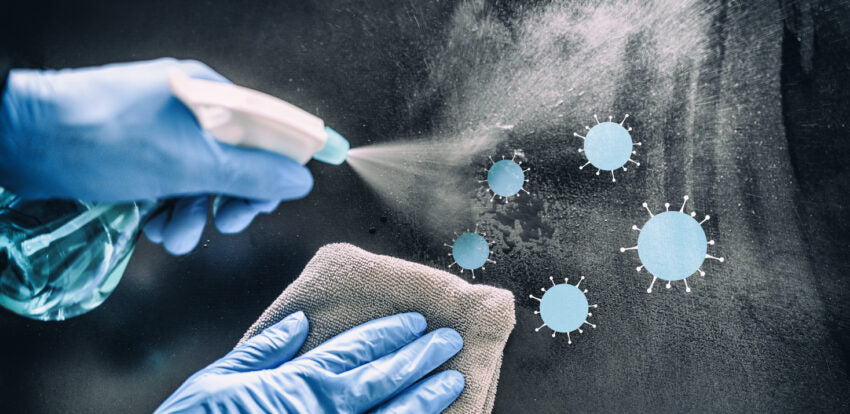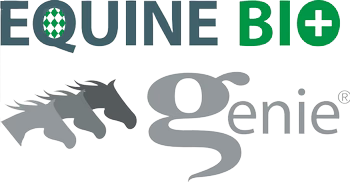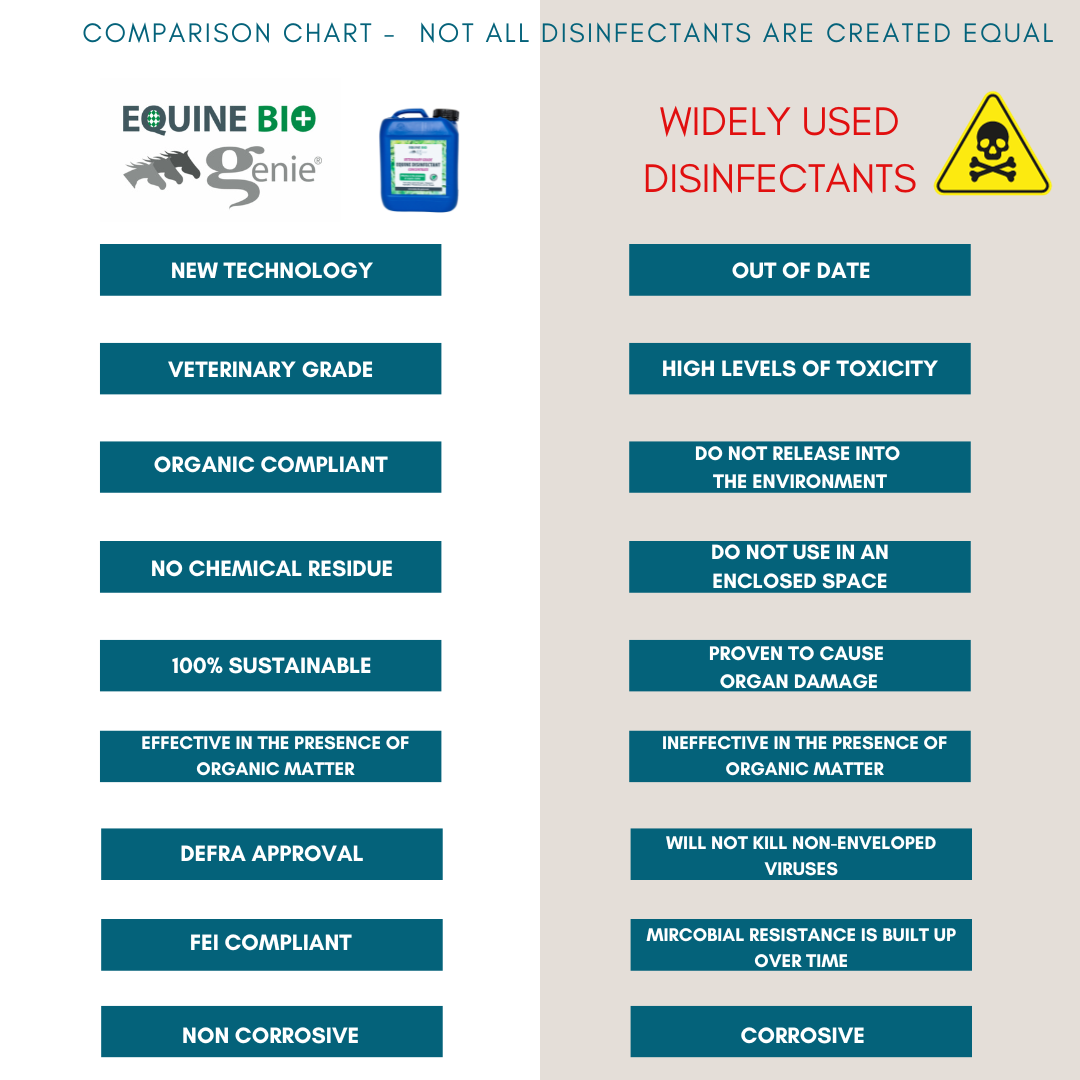
What to look out for in other products
Disinfectants that are commonly used around our horses have been gradually outdated. As new technology emerges in other areas of our world, it goes to illustrate the need for advanced biocidal technology to benefit the
HORSE. This is where we pick up the baton.
We are mindful of the harmful by products presented by the ‘out of date’ products that are frequently found in equine facilities. These are usually from the QUAT family of disinfectants which are not designed to be used around horses, and as a consequence are not up to the job of adequately protecting our horses from these pathogens – particularly in the presence of
Organic matter which is the norm…and moreover, ineffective at eradicating infectious microorganisms that negatively effect our equines.

